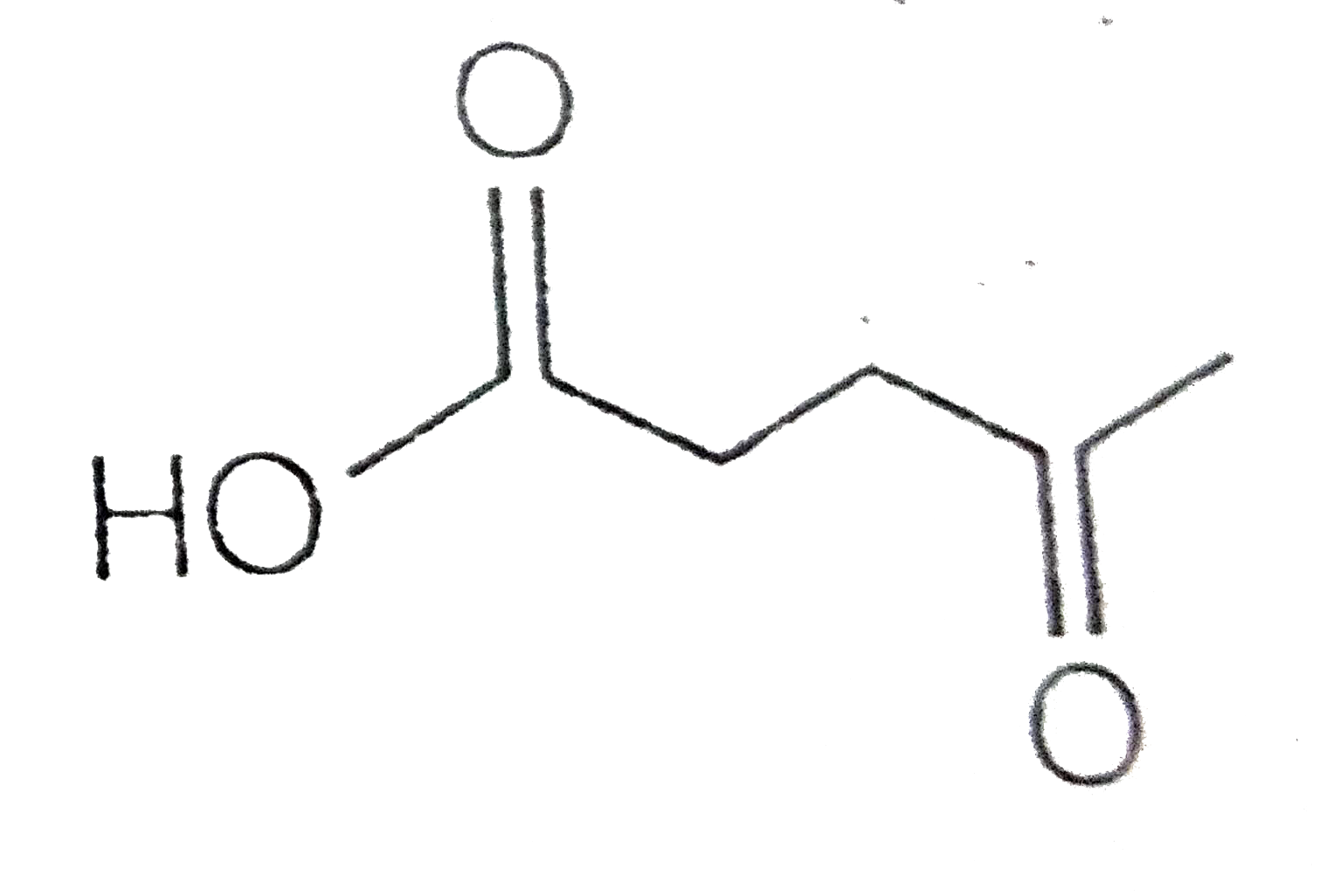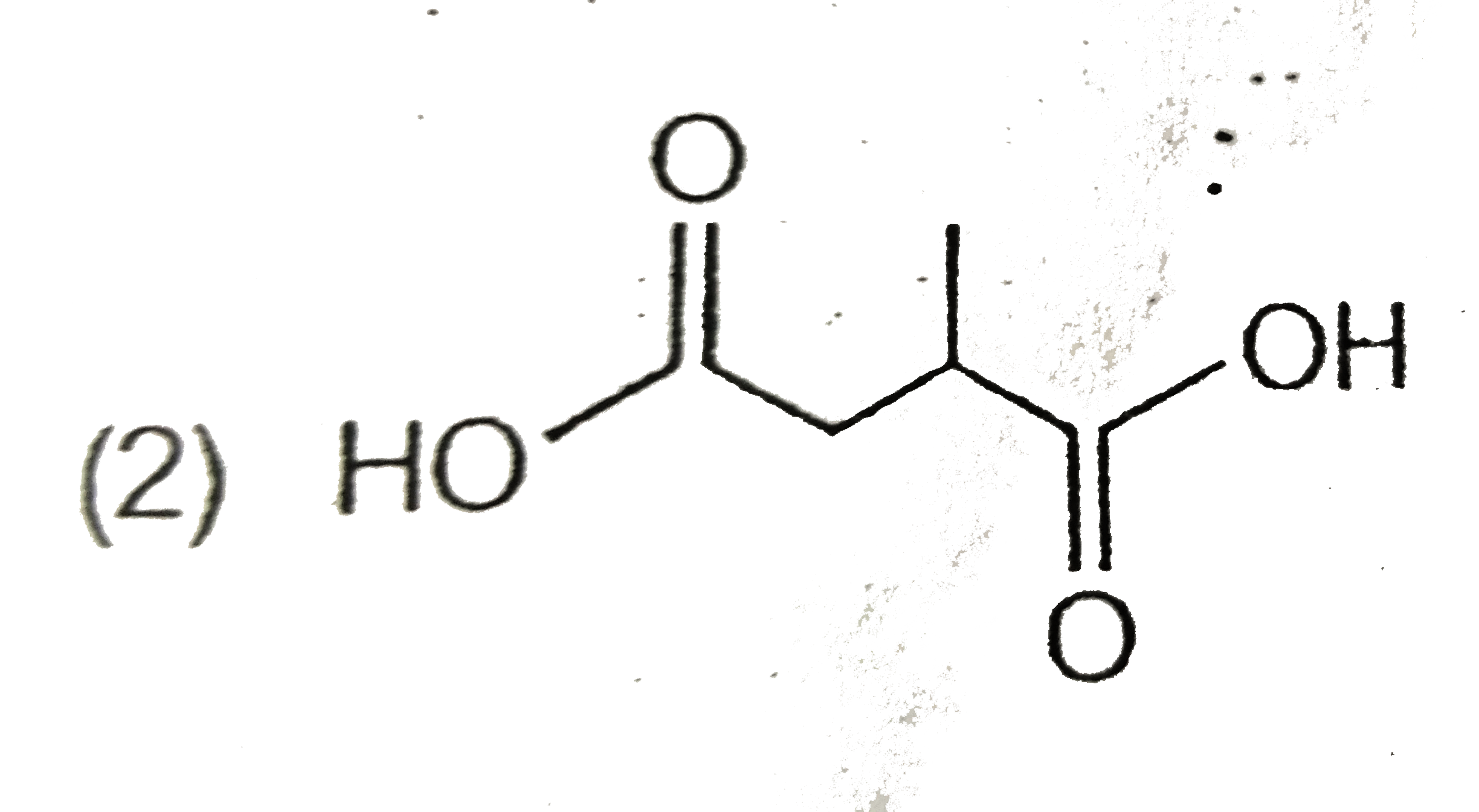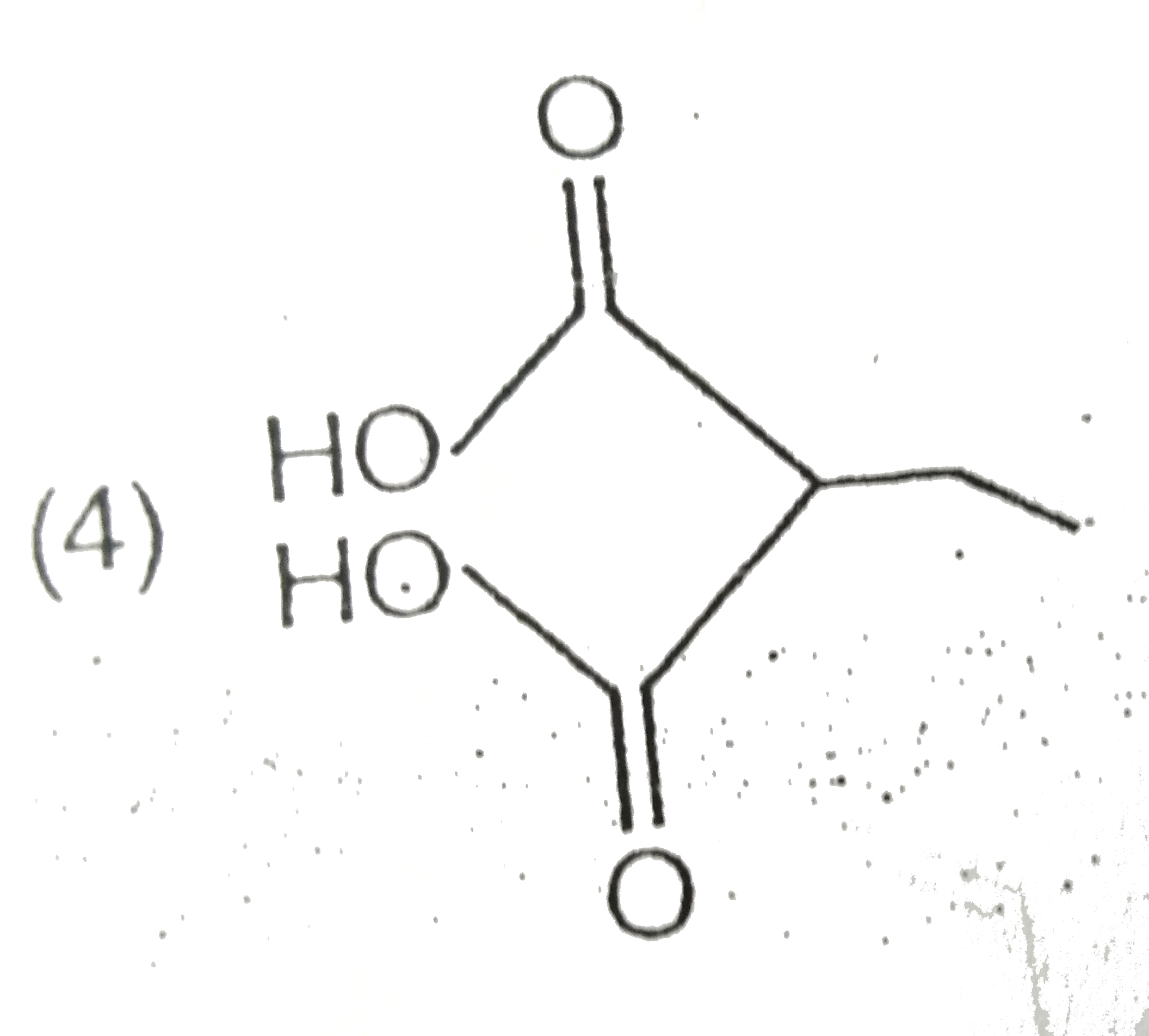A compound (A) has molecular formula C5H9CI It does not react with bromine in CCI4 On treatment with a strong base it produces a single compound (B) (B) has a molecular formula C5H8 and reacts with Baeyer's reagent . Reductive ozonotysis of (B) produces a compound (C ) which has a molecular formula C5H8O2
What would be the oxidative ozonolysis product of B ?




The correct Answer is:2
To solve the problem step by step, we will analyze the information given about the compounds A, B, and C, and determine the oxidative ozonolysis product of B.
Step 1: Analyze Compound A
- Molecular Formula: C₅H₉Cl
- Type: This is an alkyl halide.
- Reactivity: It does not react with bromine in CCl₄, indicating that it does not have a double bond (alkene) or a reactive site for electrophilic addition.
Hint: Look for clues in the reactivity to determine the structure of compound A.
Step 2: Determine the Degree of Unsaturation
To find the degree of unsaturation (DU), we use the formula:
DU=C2+H2−X2+1
Where:
- C = number of carbon atoms
- H = number of hydrogen atoms
- X = number of halogen atoms (Cl in this case)
For A:
DU=52+92−12+1=1
Hint: The degree of unsaturation indicates the presence of either a double bond or a ring structure.
Step 3: Structure of Compound A
Since the degree of unsaturation is 1 and it does not react with bromine, it suggests that compound A is likely a cyclic structure (a ring) with a chlorine atom. The most plausible structure is a cyclobutane derivative with a chlorine substituent.
Hint: Consider cyclic structures when the degree of unsaturation indicates a ring.
Step 4: Reaction with Strong Base
When compound A reacts with a strong base like alcoholic KOH, it undergoes dehydrohalogenation to form compound B, which is an alkene.
Hint: Dehydrohalogenation typically results in the formation of alkenes.
Step 5: Analyze Compound B
- Molecular Formula: C₅H₈
- Reactivity: It reacts with Baeyer's reagent (KMnO₄), indicating that it is an alkene.
Hint: The reactivity with Baeyer's reagent suggests that compound B has a double bond that can be oxidized.
Step 6: Reductive Ozonolysis of B
Reductive ozonolysis of compound B will break the double bond and typically yield aldehydes or ketones. Given that B has the formula C₅H₈, it is likely to yield two aldehyde products upon reductive ozonolysis.
Hint: Consider the structure of B to predict the products of ozonolysis.
Step 7: Predict the Oxidative Ozonolysis Product of B
In oxidative ozonolysis, the products are typically carboxylic acids instead of aldehydes. Therefore, if B undergoes oxidative ozonolysis, it will yield carboxylic acids.
Hint: Remember that oxidative ozonolysis converts aldehydes to carboxylic acids.
Conclusion
The oxidative ozonolysis product of compound B will be a compound with the molecular formula C₅H₈O₂, which corresponds to two carboxylic acid groups formed from the cleavage of the double bond in B.
Final Answer: The oxidative ozonolysis product of B is a compound with the molecular formula C₅H₈O₂ (two carboxylic acids).
- Molecular Formula: C₅H₉Cl
- Type: This is an alkyl halide.
- Reactivity: It does not react with bromine in CCl₄, indicating that it does not have a double bond (alkene) or a reactive site for electrophilic addition.
To find the degree of unsaturation (DU), we use the formula:
DU=C2+H2−X2+1
Where:
- C = number of carbon atoms
- H = number of hydrogen atoms
- X = number of halogen atoms (Cl in this case)
DU=52+92−12+1=1
Since the degree of unsaturation is 1 and it does not react with bromine, it suggests that compound A is likely a cyclic structure (a ring) with a chlorine atom. The most plausible structure is a cyclobutane derivative with a chlorine substituent.
When compound A reacts with a strong base like alcoholic KOH, it undergoes dehydrohalogenation to form compound B, which is an alkene.
- Molecular Formula: C₅H₈
- Reactivity: It reacts with Baeyer's reagent (KMnO₄), indicating that it is an alkene.
Reductive ozonolysis of compound B will break the double bond and typically yield aldehydes or ketones. Given that B has the formula C₅H₈, it is likely to yield two aldehyde products upon reductive ozonolysis.
In oxidative ozonolysis, the products are typically carboxylic acids instead of aldehydes. Therefore, if B undergoes oxidative ozonolysis, it will yield carboxylic acids.
The oxidative ozonolysis product of compound B will be a compound with the molecular formula C₅H₈O₂, which corresponds to two carboxylic acid groups formed from the cleavage of the double bond in B.
Topper's Solved these Questions
- HALOALKANES AND HALOARENES BOOK - AAKASH INSTITUTE ENGLISHCHAPTER - HALOALKANES AND HALOARENES EXERCISE - Assignment (Section - E) ( Assertion - Reason type Questions )
7 Videos
- HALOALKANES AND HALOARENES BOOK - AAKASH INSTITUTE ENGLISHCHAPTER - HALOALKANES AND HALOARENES EXERCISE - Assignment (Section - F) (Matrix - Match Type Question )
4 Videos
- HALOALKANES AND HALOARENES BOOK - AAKASH INSTITUTE ENGLISHCHAPTER - HALOALKANES AND HALOARENES EXERCISE - Assignment (Section - C ) ( Objective Type Question(More than one options are correct ))
17 Videos
- GENERAL PRINCIPLES AND PROCESSES OF ISOLATION OF ELEMENTSBOOK - AAKASH INSTITUTE ENGLISHCHAPTER - GENERAL PRINCIPLES AND PROCESSES OF ISOLATION OF ELEMENTSEXERCISE - Try Yourself
33 Videos
- HYDROCARBONSBOOK - AAKASH INSTITUTE ENGLISHCHAPTER - HYDROCARBONSEXERCISE - Assignment(Section - C) (Previous Years Questions)
60 Videos
Similar Questions
A compound (A) has molecular formula C5H9CI It does not react with bromine in CCI4 On treatment with a strong base it produces a single compound (B) (B) has a molecular formula C5H8 and reacts with Baeyer's reagent . Reductive ozonotysis of (B) produces a compound (C ) which has a molecular formula C5H8O2
formation of ( B) from (A) involves
View SolutionA compound (A) has molecular formula C5H9Cl .It does not react with bromine in CCl4. On treatment with a strong base it produces a single compound (B), (B) has a molecular formula C5H8 and reacts with Baeyer's reagent . Reductive ozonolysis of (B) produces a compound (C ) which has a molecular formula C5H8O2
On the basis of the given data what would be the structure of A ?
View SolutionPentane has the molecular formula C5H12. It has
View SolutionCompound having molecular formula C5H12O cannot show
View SolutionThe compound having the molecular formula C3H9N can represent
View SolutionDraw the isomers of a compound with the molecular formula C4H4O4
View SolutionEthane, with the molecular formula C2H6 has
View SolutionA compound X has a molecular formula of C5H10. Write down the empirical formula of X.
View SolutionHow many acids and esters are possible for the compound with molecular formula, C4H8O2 ?
View SolutionThe number of metamers of the compound with molecular formula C5H12O is/are:
View Solution
